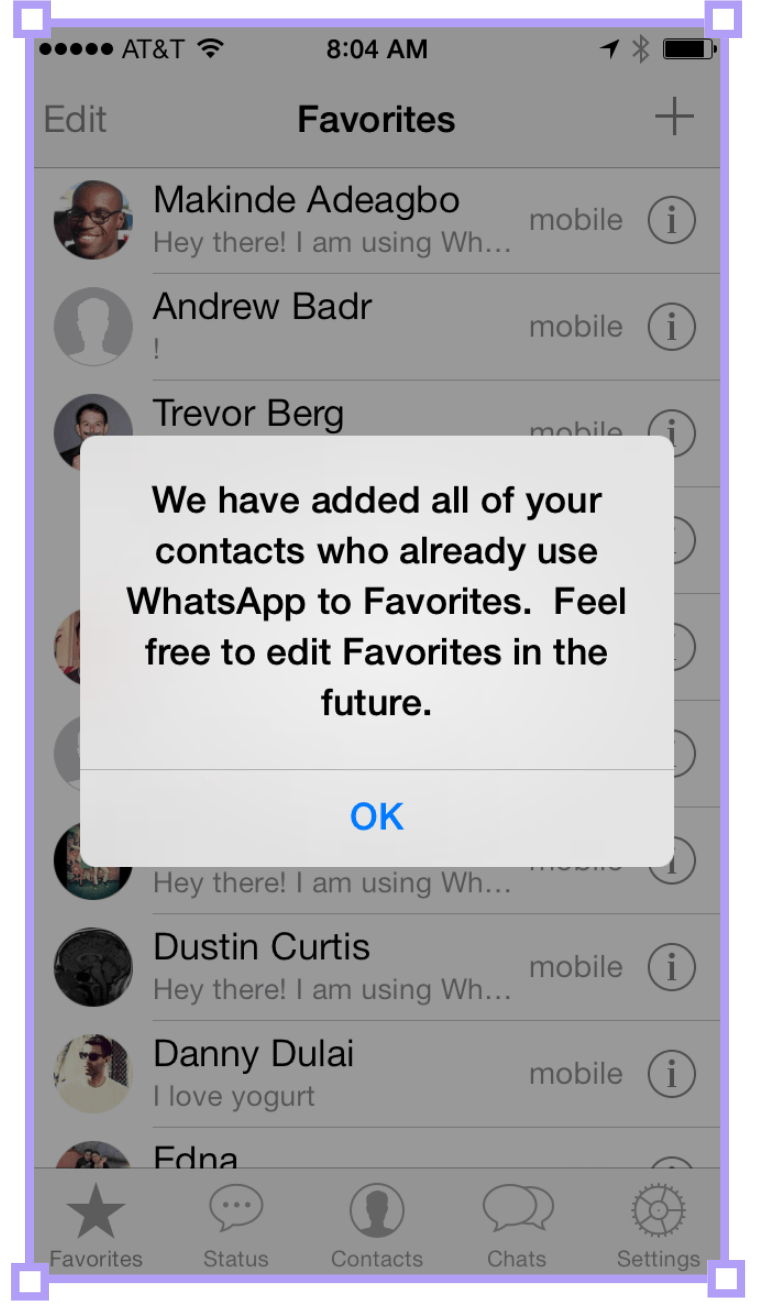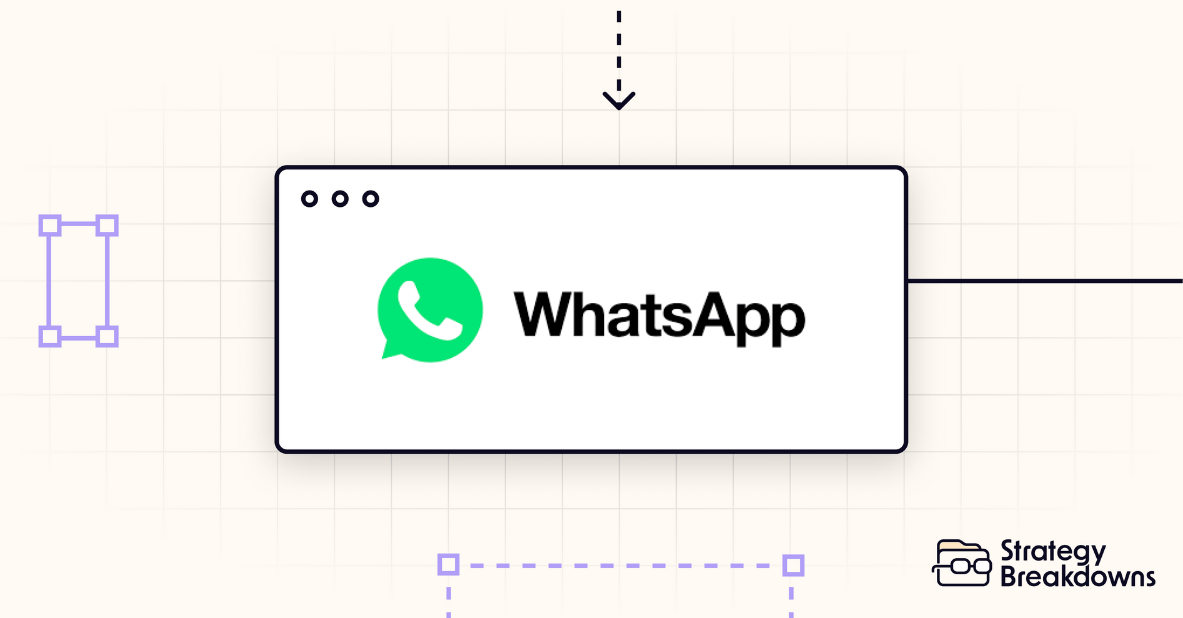- Strategy Breakdowns
- Posts
- 🎯 WhatsApp's signup strategy
🎯 WhatsApp's signup strategy
How to solve the cold start problem
Read time: 3 minutes 54 seconds

Writing to you from Torredembarra - a small coastal town about 1.5hrs south of Barcelona.
Lots to fill you in on.
 |  |  |
Here for 2 weeks.
Next stop, Valencia for a month.
Vamos.
— Tom
P.S. Everyone uses WhatsApp here. Couldn’t help myself.


AI teams move fast. Security compliance slows them down.
Building with AI demands speed, but selling AI demands trust. That's where Vanta comes in.
By automating the hardest parts of SOC 2, ISO 27001, and more, Vanta helps AI innovators get audit-ready faster - without burning engineering hours.
LangChain, Writer, and Cursor all scaled faster by getting security right early.
Free Report: The State of Developer Experience 2025
Discover the latest trends shaping developer productivity, satisfaction, and retention in Atlassian’s latest guide. Get actionable strategies to future-proof your engineering org built on the combined insights of over 3,500 developers.
Thank you for supporting our sponsors, who keep this newsletter free.



Chess Move
The what: A TLDR explanation of the strategy
The typical mobile onboarding flow in 2009:
Enter your email address
Choose a password
Confirm your password (🤦♂️)
Validate your email address (a.k.a. switch apps and get lost in your inbox)
Create a username
Sorry that one’s taken, how about tom_314159?
You’re in! (but none of your friends are - time to invite them one by one)
WhatsApp skipped the email and username dance entirely, letting users sign up with just a phone number.
No password to remember. No username to invent. No need to leave the app.
By making your phone number your identification and authentication, the app felt like a natural upgrade of your phone's core function (messaging) rather than yet another account to manage.
Once a user validated their number, WhatsApp asked for access to their contacts, letting the app piggyback off their existing social graph.
WhatsApp scanned your address book and showed you everyone already using the service (and prompted you to invite those who weren’t).
The first screen post-onboarding gave you immediate ability to chat with real people you already knew (plus a viral loop to spread WhatsApp throughout your network).
"We created a unique thing: we built the messenger connected to contacts from a phone book. ICQ, for example, gave you a 7-digits number you had to memorize, write on a paper and tell your friends. It was not very user-friendly, to put it mildly. Using Skype you had to get the username, share this with friends, add each other... All of them were not handy."
Within months of implementing phone number signup, WhatsApp hit 250,000 users.
2 years later in October 2011, they were handling 1 billion messages per day.
By early 2013, they hit 200 million active users.
One of the fastest user acquisition curves in tech history.

💡 | Strategy Playbook: Leverage pre-existing behaviours and mechanisms to eliminate friction. |


Breakdown
The how: The strategic playbook boiled down to 3x key takeaways
1. Make it feel like texting, not another app
WhatsApp didn't try to reinvent communication. They simply made texting free.
Using a phone number made WhatsApp feel instantly familiar.
Texting already worked this way.
You didn't need to explain it.
Like SMS, WhatsApp was unapologetically utilitarian. Founders Koum and Acton famously taped a note reading "No Ads! No Games! No Gimmicks" on their office door.

They even positioned WhatsApp as "SMS 2.0" - a natural upgrade path from something everyone already used.
By anchoring the entire experience to phone numbers, WhatsApp made this positioning effortless – if you could text, you could use WhatsApp.
→ Don't ask users to learn new mechanics – upgrade mechanics they already use.
2. Solve the cold start problem by hijacking an existing graph
WhatsApp didn't build a social graph from scratch. They borrowed yours.
Here’s how onboarding worked:
Enter your phone number to sign up
Allow access to contacts
Allow access to SMS messages
The app automatically enters your SMS confirmation code
The app automatically shows you a list of your contacts already on the platform

Not only does SMS simplify the verification process, but by asking the user to allow access to SMS messages, WhatsApp can read the confirmation code directly, saving users the nuisance of having to switch apps, dig through their messages, and potentially get distracted along the way.
The result - 96% message open rates compared to 20-21% for email.
By allowing access to contacts, the first screen post onboarding delivered immediate value – you could start real conversations instantly, not in three months when enough friends finally joined.

Venture investor Anu Hariharan described this as "hacking" the address book: "no login required, address book was leveraged, and you suddenly launched the cluster of close connections".
This solved the social network chicken-and-egg problem:
New users never faced an empty app.
They saw friends, colleagues, and family ready to chat.
No friends requests required.
Let us into your phone’s social circles, and we’ll make messaging better (and free) for all of you.
3. Natural mechanics for users to invite more users
The contact integration didn't just solve onboarding.
→ It built viral growth loops into the product's DNA.
WhatsApp automatically uploads entire address books, performs contact matching against registered users, and presents:
Your contacts already on the app
AND
Your contacts who aren’t on the app.
When you messaged a friend who wasn't on WhatsApp, they'd receive an SMS with a download link.

The app made it obvious which contacts were missing from conversations, creating natural invitation moments.
The address book virality mechanics turned users into distribution channels – each new signup was likely to invite more signups, which strengthened the network for everyone else.
Because WhatsApp was phone-number-based and cross-platform, these network effects weren’t siloed – anyone with a mobile number could join the party.
Your phone number identity carried across all devices (most people have multiple email addresses, but only one phone number.
Unlike competitors like BlackBerry Messenger or iMessage which were walled gardens (only available for 1 device ecosystem), WhatsApp could spread virally between iPhone / Nokia / BlackBerry / Android, etc.
The more friends joined, the more compelling it became for others.
Over time, entire communities (family circles, school classes, workplaces) reached a tipping point where not being on WhatsApp meant missing out.
Today, WhatsApp’s onboarding flow is the industry standard for messaging apps - Snapchat, Telegram, Signal, and virtually every other player asks for your phone number and contact access on signup.


Rabbit Hole
The where: 3x high-signal resources to learn more
[6 minute read]
In a rare Quora forum answer, co-founder Brian Acton himself explains the fundraising leverage WhatsApp gained from their 99-cent annual fee.
Break-even profitability meant they could "be selective in terms of investment and dilution" → which translated to founders keeping 65% equity through $60M in funding.
Direct from the source, no PR filter.
[3 minute read]
When Sequoia (WhatsApp's lead investor) writes about their own exit... you know it's going to be good.
Their take that show why Facebook's "insane" $19b price tag actually made perfect sense:
User growth rate vs. Facebook's early days
Cost per user compared to Instagram acquisition and Facebook IPO
The "WhatsApp moment" threatening Facebook's moat
Plus, they were buying the global social graph's mobile future before Google could.
(TIL Sequoia used to publish memos like this on tumblr. Worth digging around for tech archaeologist - last post was 9 years ago).
[6 minute read]
900 million users. 42 billion messages per day. 50 engineers.
Read that again.
A technical breakdown of how WhatsApp built one of the most efficient platforms in tech history:
Why they chose Erlang when everyone else picked Ruby or Python
How Jan Koum's "no" reflex shaped the entire engineering philosophy
The FreeBSD tweaks that let them handle more concurrent connections than anyone thought possible
Bonus: Check the HN comments where folks lose their minds debating whether scaling a ‘simple’ app like instant messaging to 1b users is even impressive.
What did you think of today's edition? |


Whenever you're ready, there are 3 ways we can help you:
Our flagship course on how to use free internet data to make better strategic decisions. Contains 5 years of strategy expertise, proven methods, and actionable tactics to accelerate your career with modern-day strategy skills.
We have a growing audience of 90,000+ strategists from top companies like Google, Meta, Atlassian, Stripe, and Netflix. Apply to feature your business in front of Strategy Breakdowns readers.
One of the most common questions we get asked is: “What tools do you use to run Strategy Breakdowns?” So, we’ve open-sourced our tech stack to give you an inside-look at exactly what tools we’re using to power each corner of this operation.







Reply